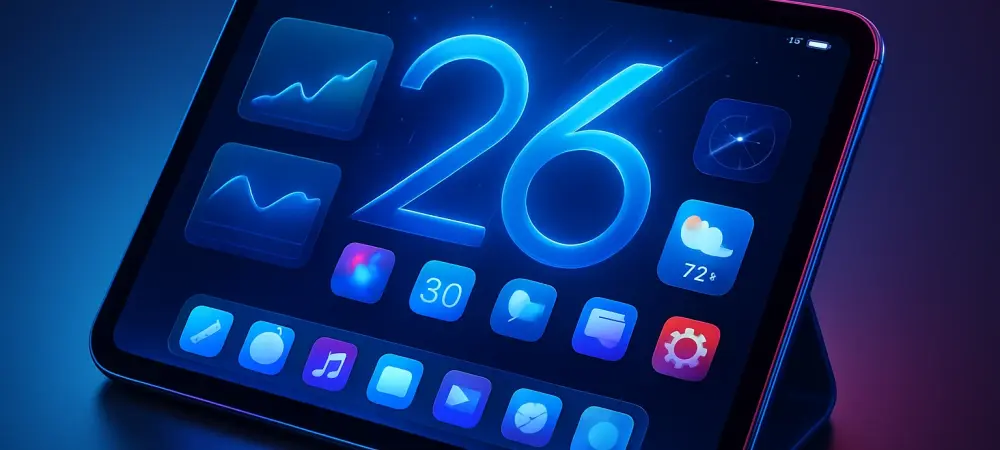I’m thrilled to sit down with Dominic Jainy, a seasoned IT professional whose deep knowledge of artificial intelligence, machine learning, and blockchain gives him a unique perspective on emerging tech trends. Today, we’re diving into the latest iPadOS 26 update from Apple, exploring how it’s reshaping the tablet experience with a more desktop-like interface, enhanced productivity tools, and groundbreaking communication features. Dominic will share his insights on what these changes mean for users and how they position the iPad in today’s tech landscape.
How do you think iPadOS 26’s push toward a Mac-like experience impacts its role as a potential laptop or desktop replacement?
I think Apple’s strategy with iPadOS 26 is a clear nod to users who’ve long wanted a tablet that can truly stand in for a traditional computer. By integrating a more familiar desktop-style interface, like advanced window management, they’re addressing a key pain point—making the iPad feel less like a mobile device and more like a full-fledged workstation. For many, especially those doing light to medium workloads, this update could tip the scales. It’s not just about aesthetics; it’s about functionality that mirrors what you’d expect from a Mac. Compared to older iPadOS versions, this feels like a leap toward bridging that gap, though heavy power users might still need a laptop for certain tasks.
Can you break down the new window management system in iPadOS 26 and how it enhances usability?
Absolutely. The windowing system in iPadOS 26 is a game-changer, allowing users to manage up to 12 windows at once with full control over sizing and tiling. The Mac-like traffic light controls—those little red, yellow, and green buttons—are intuitive for closing, minimizing, or maximizing windows, and a long press even reveals extra options. This setup makes multitasking feel seamless, especially on an external display where you get that desktop vibe. It’s a huge step up from the more limited multitasking of previous versions, turning the iPad into a much more practical workspace.
What’s your take on the updates to the Files app and how they help with organization?
The Files app updates are subtle but incredibly useful. Being able to pin files or folders to the Dock means you can jump straight to your most-used content without digging through menus. This works not just with iCloud but also other cloud storage services, which is a big win for versatility. Having quick access to key folders right at the bottom of your screen streamlines daily tasks—whether you’re a student, a professional, or just managing personal stuff, it cuts down on friction and keeps things tidy.
Apple brought the Preview app to the iPad with this update. Why do you see this as a significant addition?
The Preview app is a fantastic addition because it brings a familiar Mac tool to the iPad with the same core capabilities—viewing, editing, and marking up PDFs and images. For anyone who’s used it on a Mac, the experience is almost identical, which makes transitioning between devices effortless. It’s a big deal for professionals or students who deal with digital documents daily; instead of paying for third-party apps to do basic tasks like signing a contract, you’ve got a built-in solution that’s both powerful and free.
Automation seems to be a major focus in iPadOS 26. Can you explain how these new tools can change the way users work?
Automation in iPadOS 26 is where I see a lot of untapped potential. With Apple Intelligence features and enhanced Shortcuts, users can build custom workflows to automate repetitive tasks. Think of setting up a Shortcut to organize files, send scheduled messages, or process data across apps with minimal input. These tools are smarter now, adapting to user behavior in subtle ways. For power users, this could mean shaving hours off their weekly tasks, though I suspect it’ll take time for the average person to fully embrace and customize these features.
The Live Translation feature in iPadOS 26 sounds revolutionary for communication. How do you think it will impact users, especially in a professional setting?
Live Translation is one of those features that could genuinely transform how we connect globally. Offering real-time captions and voice translation during calls or messages in multiple languages—right on the device—is a massive step for breaking down language barriers. For international business professionals, this means smoother meetings and negotiations without needing external tools or translators. Even the fact that the other person doesn’t need an Apple device makes it widely accessible. I see this being a lifeline for enterprise users working across borders.
What’s your forecast for how iPadOS 26 and its features might shape the future of tablet computing?
I believe iPadOS 26 sets a new benchmark for what tablets can do, pushing them closer to being true computer replacements for a wider audience. Features like advanced window management and automation signal a future where tablets aren’t just consumption devices but powerful productivity hubs. I expect we’ll see competitors scramble to match this level of integration and usability, while Apple will likely double down on blending iPadOS and macOS experiences even further. The translation tools also hint at a focus on global connectivity, which could redefine how we think about mobile work in a borderless world.

